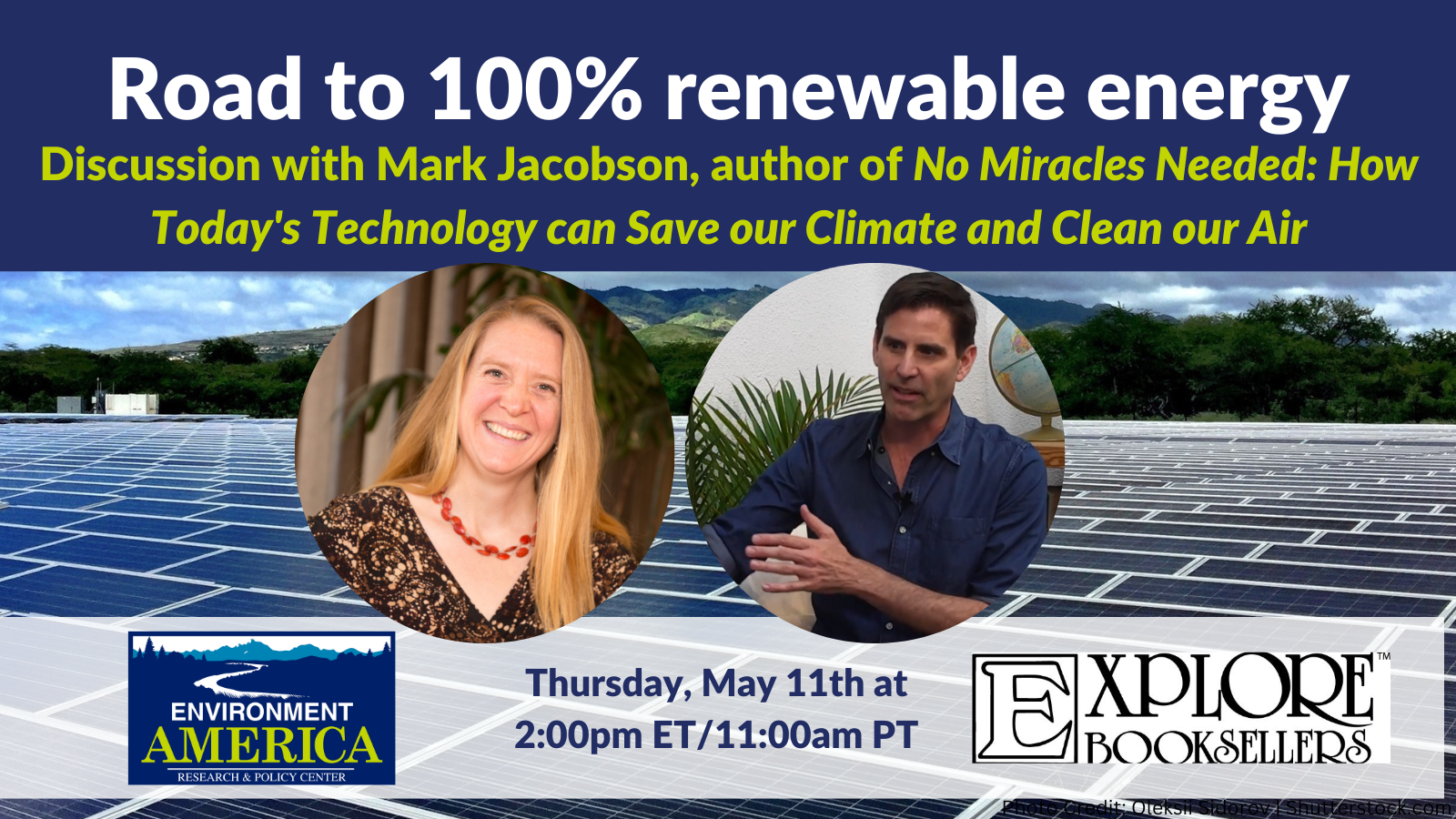
America’s Dirtiest Power Plants
The outsized impact power production has on our planet
A new factsheet ranks U.S. power plants by their contribution to climate change. The dirtiest power plants have an outsized impact on our planet.
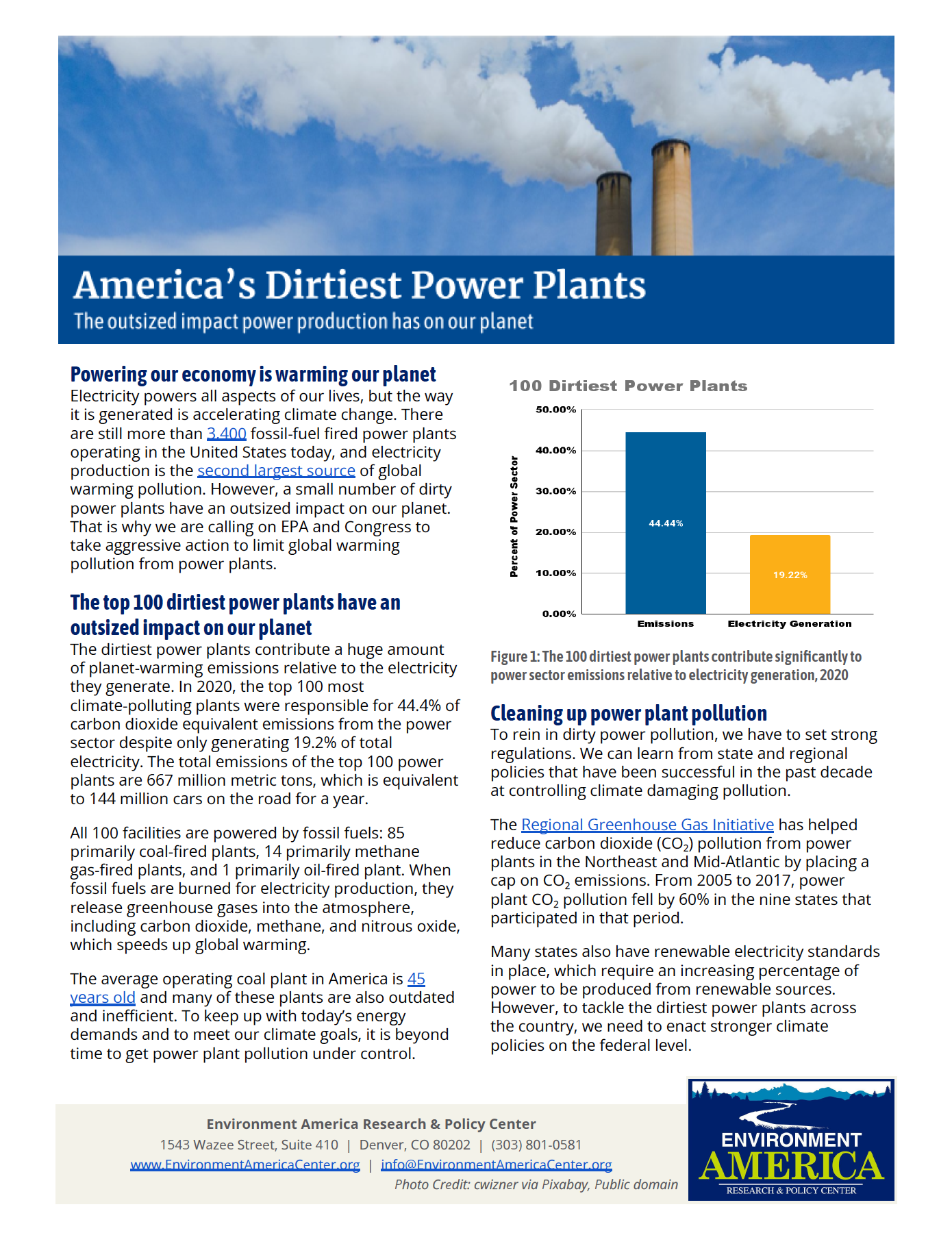
Powering our economy is warming our planet
Electricity powers all aspects of our lives, but the way it is generated is accelerating climate change. There are still more than 3,400 fossil-fuel fired power plants operating in the United States today, and electricity production is the second largest source of global warming pollution. However, a small number of dirty power plants have an outsized impact on our planet. That is why we are calling on EPA and Congress to take aggressive action to limit global warming pollution from power plants.
The top 100 dirtiest power plants have an outsized impact on our planet
The dirtiest power plants contribute a huge amount of planet-warming emissions relative to the electricity they generate. In 2020, the top 100 most climate-polluting plants were responsible for 44.4% of carbon dioxide equivalent emissions from the power sector despite only generating 19.2% of total electricity. The total emissions of the top 100 power plants are 667 million metric tons, which is equivalent to 144 million cars on the road for a year.
All 100 facilities are powered by fossil fuels: 85 primarily coal-fired plants, 14 primarily methane gas-fired plants, and 1 primarily oil-fired plant. When fossil fuels are burned for electricity production, they release greenhouse gases into the atmosphere, including carbon dioxide, methane, and nitrous oxide, which speeds up global warming.
The average operating coal plant in America is 45 years old and many of these plants are also outdated and inefficient. To keep up with today’s energy demands and to meet our climate goals, it is beyond time to get power plant pollution under control.
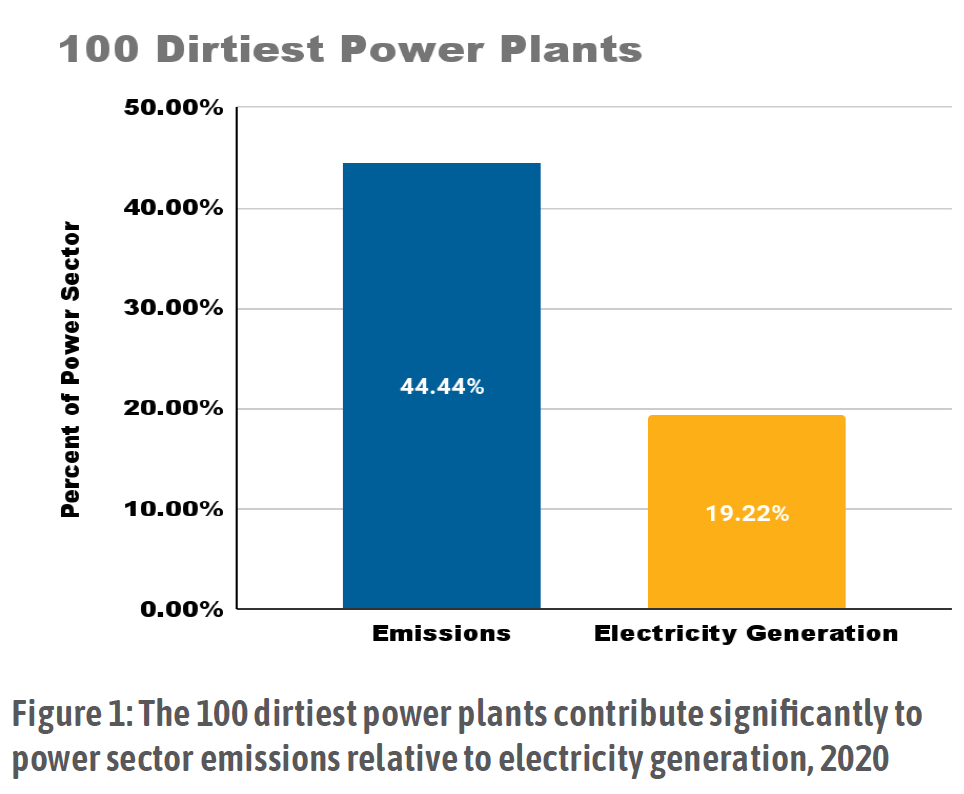
Cleaning up power plant pollution
To rein in dirty power pollution, we have to set strong regulations. We can learn from state and regional policies that have been successful in the past decade at controlling climate damaging pollution.
The Regional Greenhouse Gas Initiative has helped reduce carbon dioxide (CO2) pollution from power plants in the Northeast and Mid-Atlantic by placing a cap on CO2 emissions. From 2005 to 2017, power plant CO2 pollution fell by 60% in the nine states that participated in that period.
Many states also have renewable electricity standards in place, which require an increasing percentage of power to be produced from renewable sources. However, to tackle the dirtiest power plants across the country, we need to enact stronger climate policies on the federal level.
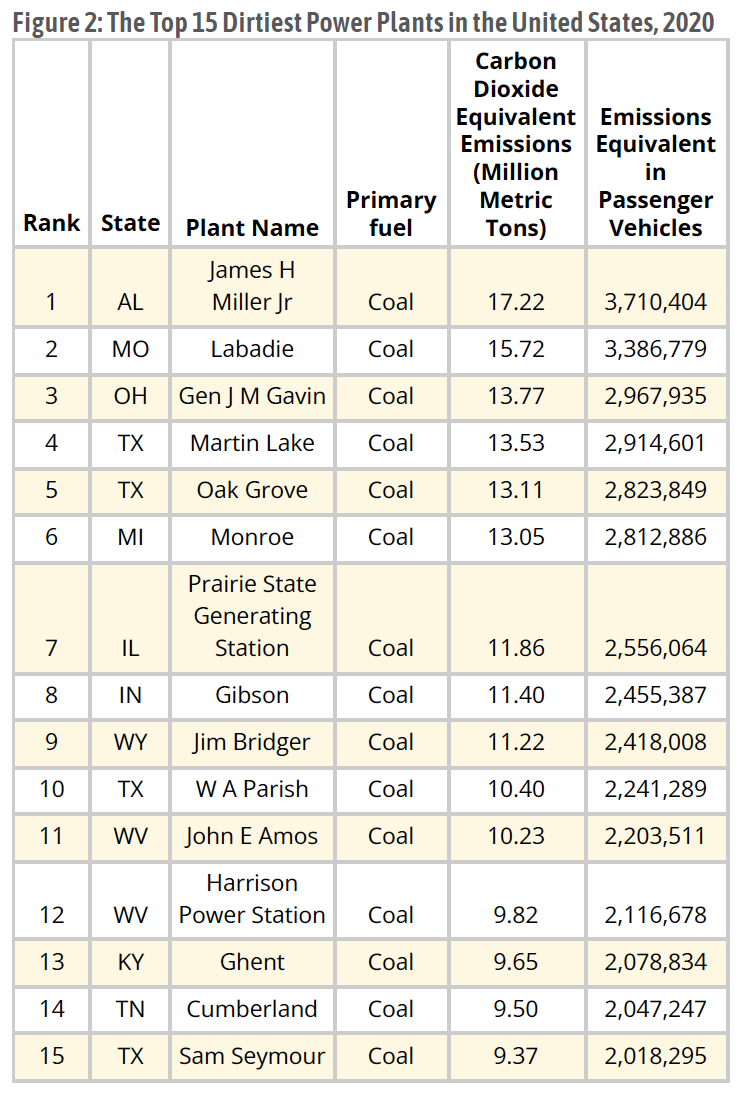
Our climate can’t wait
Every year, the impacts of climate change are more pronounced. The last seven years have been the seven “hottest in recorded history”. Warming temperatures and intensifying drought will cause wildfire seasons to start earlier and last longer. And climbing ocean temperatures are increasing the frequency of extreme hurricanes.
The International Panel on Climate Change has stated that greenhouse gas emissions must peak no later than 2025 to avoid the worst impacts of climate change. This will require both putting strong controls on our dirtiest energy sources and rapidly ramping up clean energy deployment across the power sector.
Methane gas is not the answer
In the past decade, more and more coal plants have been decommissioned to be replaced with methane gas as the advent of fracking unleashed a glut of cheap gas fuel. For years, methane gas was marketed as a green “bridge fuel” between coal and renewables. However, while burning methane gas releases less carbon dioxide than coal per kilowatt of electricity produced, that is only part of methane’s climate impact.
Methane gas is an extremely potent greenhouse gas that has 83 times the warming potential of carbon dioxide in a 20 year timescale and 30 times the warming potential in a 100 year timescale. Methane leaks also occur during both the extraction and distribution processes.
These methane leaks frequently occur unchecked and are severely underreported. According to a recent International Energy Agency study, methane emissions are 70% higher than reported by government officials.
Once built, methane gas plants are meant to last for decades, locking in our dependence on fossil fuels and accelerating climate change. Clean energy sources like solar and wind are already ready to be deployed at scale and are now often just as cheap. We need to replace aging, dirty fossil fuel-fired plants with these renewable energy sources to achieve necessary greenhouse gas reductions and protect our climate.
Policy recommendations
It is going to take action at all levels of government to get power plant pollution under control. To act at the speed that scientists say is necessary to maintain a livable planet, we need to both put strong limits on existing fossil-fuel fired plants and accelerate the transition to renewable energy.
-
The EPA should enact the strongest possible limits on carbon dioxide pollution from new and existing power plants.
-
Congress should pass a climate package that includes extending and expanding clean energy tax credits.
-
States, cities, and counties should commit to achieving 100% renewable energy for their communities.
Topics
Find Out More


Lawn care goes electric
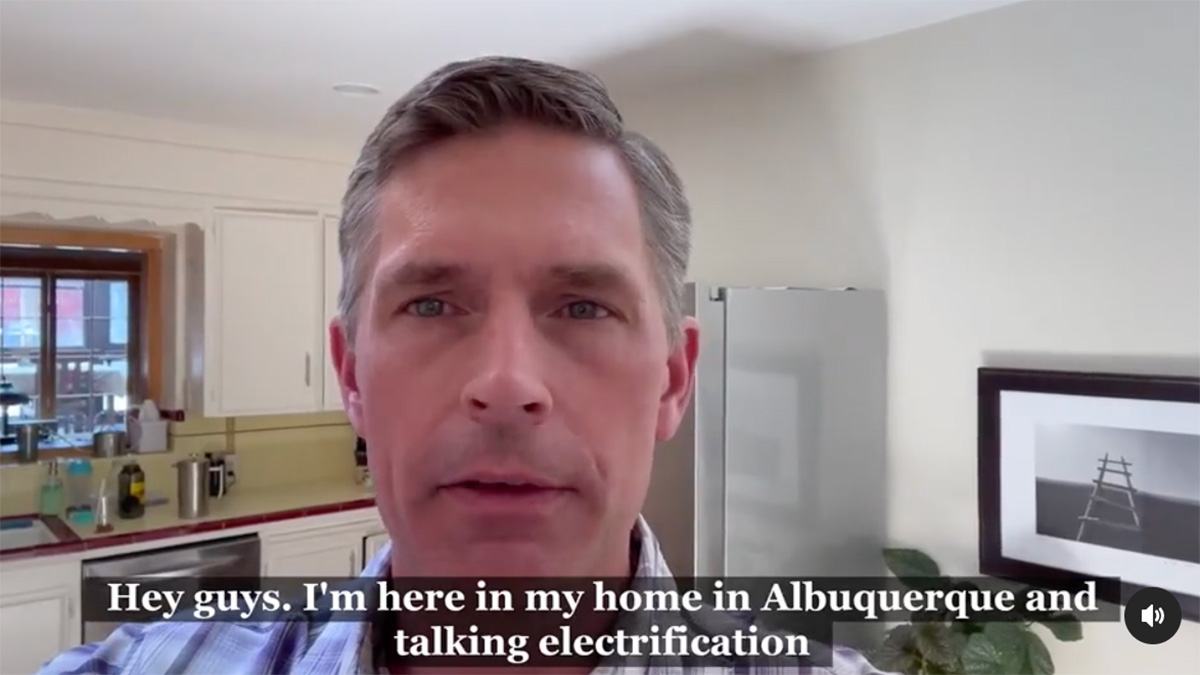
Clean cooking tips from Sen. Heinrich
